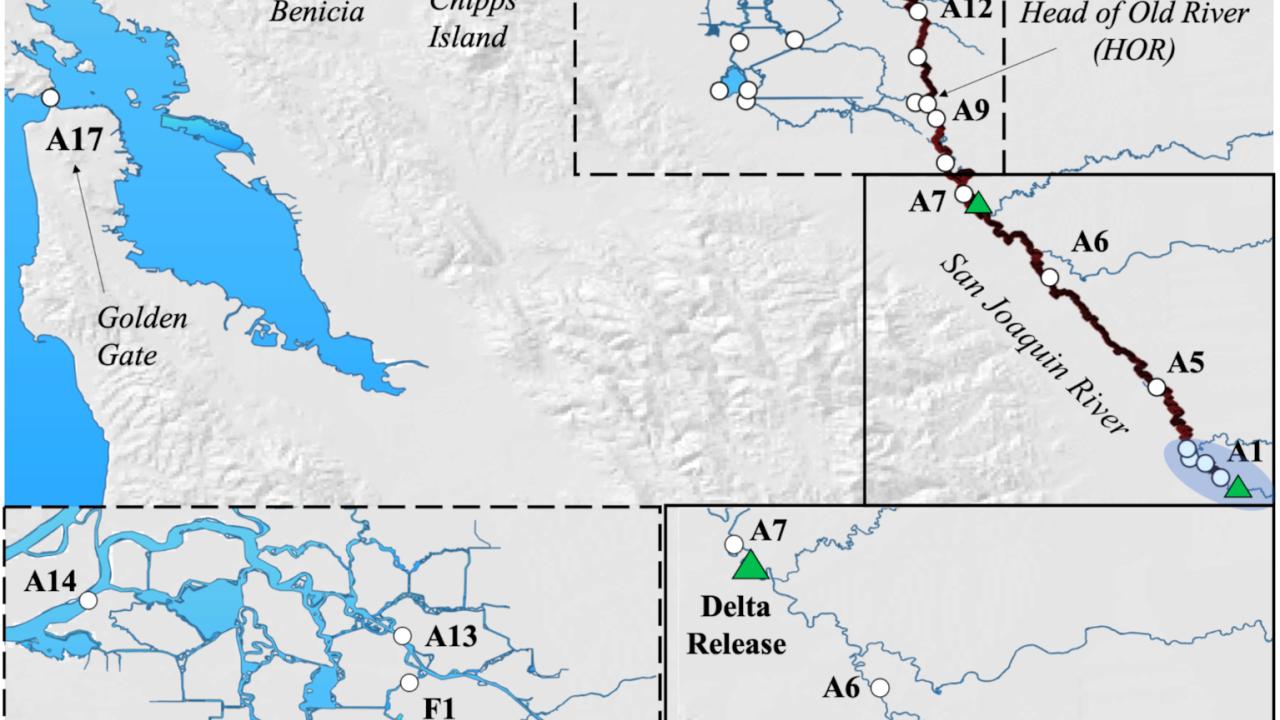
Survival of a threatened salmon is linked to spatial variability in river conditions
New Research by Hause et al. 2022
Salmonid numbers are in decline across the western USA. Central Valley spring-run Chinook salmon's evolutionary significant unit (ESU) is extirpated from the San Joaquin River, and reintroduction efforts have resulted in poor survival of juveniles as they swim toward the ocean. Understanding the factors impacting outmigration survival is critical for population reestablishment. However, the effects of habitat variability have largely been overlooked in survival models that try to estimate where this occurs.
New research by Colby Hause, Gabriel Singer, Rebecca Buchanan, Dennis Cocherell, Nann Fangue, and Andrew Rypel now shows that a classification scheme incorporating habitat variability described variation in smolt survival better than previous models that only used geography or distance. This combination of high-resolution water quality mapping (FLAMe) and advanced acoustic telemetry of juvenile salmon demonstrates the value of integrating river habitat classification frameworks to improve our understanding of survival dynamics of imperiled fish populations.
- Related: Science of an underdog: the improbable comeback of spring-run Chinook salmon in the San Joaquin River, by Andrew Rypel, Gabriel Singer, and Nann Fangue. California WaterBlog 2021.
